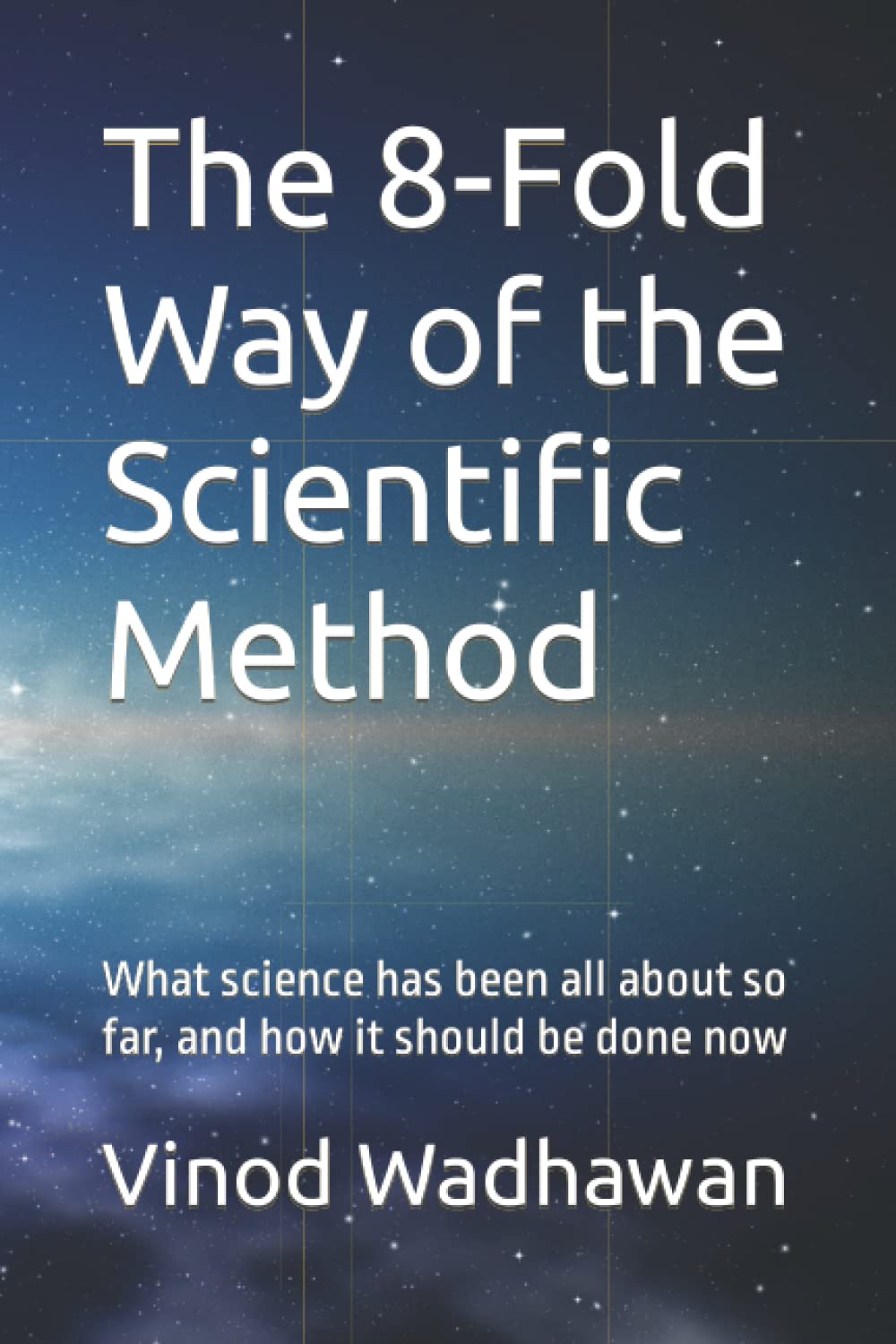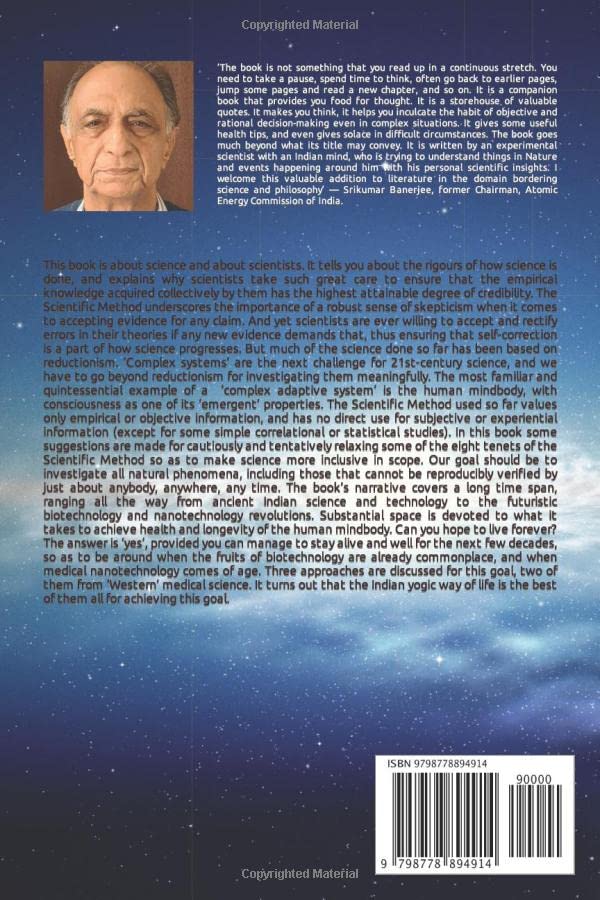Customer Services
Copyright © 2025 Desertcart Holdings Limited
Desert Online General Trading LLC
Dubai, United Arab Emirates



Full description not available
L**K
Grounded tour of scientific topics related to life, the universe and many related things
A delightful, enlightening tour of very important scientific topics. The author builds a foundation on top of the scientific method and then layers on interesting side journeys covering a wide range of topics, such as complex systems, free will, and how to live well.Ultimately, after giving easy-to-read and comprehend examples of what the author calls the "8-fold way of the scientific method", the author raises appropriately skeptical questions about whether the current approach to science based on that 8-fold way can help us going forward to understand such complex systems as our mindbody.I was interested in getting a perspective beyond my normal pure US-based education; that is I hoped for and received a view of scientific thinking interlaced with an Indian perspective, which I've grown to respect based on many great associations with Indian computer scientists. Having a taste of what this author can deliver, I'm now making my way through his prior book, "Understanding Natural Phenomena" as I share an interest in self-organization, emergence, and complex systems.
M**R
Great book that explains scientific phenomenon in simple to understand language
Great book for the average person that is interested in science. It is easy to read and covers a wide range of topics based on science. It emphasizes independent thinking, rather than blind faith. Very fitting for a 21st century growth mindset. I recommend getting a copy!
A**M
Must read supplementary material for High school / College and also for working age people
Even as the pandemic has caused havoc that many generations have not witnessed, it has happened at a time when humanity is best equipped to deal with it. For e.g. although the mRNA paper was published in 1989, the first mRNA vaccine platform was approved by FDA only in 2018 that paved the way for the development of Pfizer and Moderna vaccines to fight Covid-19.It also happened at a time when computing has evolved to the extent that we are able to generate the genome sequence virus in a matter of hours.They say that Nature is auto-tuned to sustain life. To me this book arrives at this very opportune moment because nature intended it!In "The 8-fold path to scientific method", Dr Wadhawan introduces to us the concept of "Scientific Method" - simply stated how to use the scientific method to our benefit and make peace with and enjoy the beauty of the world around us. He has tried to unravel the world of science for the common man. The scientific mind will automatically find a way to tide over this pandemic.
D**A
One of the most valued books I have ever read though the cheapest one
It may sound disappointing that many scientists practising science do so as a routine profession without worrying too much about ‘’Scientific Methods”. Of course good scientists and good science students do possess some ideas about the scientific methods to be employed while doing science. However even the good scientists may not feel the requirement to delve into various latent dimensions of correct scientific methods and might occasionally be tempted to arrive at wrong scientific conclusions. For instance, many physicists now think that String Theory, one of the most hyped topics of theoretical physics ever, might have been degenerated into some sort of pseudo science even when most brilliant theoretical physicists have struggled to developed it over past four decades. And of course general public is liable to be enamored by even pseudo-sciences, for instance by astrology.To the best of my knowledge, the present book might be the only one on the science and philosophy of scientific methods after the publication of The Logic of Scientific Discovery (1959), a book about the philosophy of science by the philosopher Karl Popper in which the author argued that science should adopt a methodology based on falsifiability. This is so because no number of experiments can ever prove a theory, but a reproducible experiment or observation can refute one. In his book, the author first dwells on the eight tenets of the Scientific Method, namely, (1) Right questions, (2) Right (objective or empirical) observations, (3) Right hypothesis to explain the observations, (4) Right testing of predictions of the hypothesis, (5) Right theory, (6) Right language and logic, (7) Right (minimum number of) axioms and (8) Rightly worded (falsifiable) statements. And the author asserts that these eight tenets are someway analogous to the eight steps to Nirvana emphasized by Buddha: (1) Right beliefs, (2) Right intentions, (3) Right speech , (4) Right conduct, (5) Right livelihood, (6) Right effort, (7) Right mindfulness and finally (8) Right concentration.As the author succinctly puts it: A crucial aspect of science is systematizing the knowledge acquired and, even more importantly, of making the knowledge available to everybody for scrutiny. Thus at lease in principle, science is always self-correcting. For instance, in 2020, all top scientists believed that Covid-19 virus does not float in air for too long and hence the disease does not propagate through air. But by May 2021, it appears that Covid-19 viruses are likely to freely propagate through air. Such a logical virtue of science might however be dishonored by the intellectual arrogance of the proponents of hypotheses which are not verifiable by observations and experimentations, as is the case with several aspects of Theoretical Physics and in particular the String Theory.But this book goes much beyond such mundane aspects as the author points out that all phenomena are natural and there is really nothing “supernatural”. If so, in some way religion and mysticism too come under the purview of science in a broader sense. Simultaneously, he delves deeper into some complex issues of scientific interest. Accordingly the 2nd part of this book explores newer dimensions. For instance, there are small chapters entitled “How to Live Well Forever” and “Reversal of Chronic Diseases”. However, I have not yet gone through these chapters and feel that are such topics do not gel well with the general character of this great book and were avoidable (they could be published separately). The author is bold and his book even contains a subsection “The end of theoretical physics as we know it?”. Unfortunately this subsection is based entirely on a recent popular physics book by the German theoretical physicist Sabine Hossenfelder. And though I personally like this content, I feel it has been organically connected with his overall book. The 2nd part also contains insightful long discussions on works of Stephan Wolfram on complexity. I am afraid, such sections though highly valuable in their own rights, look like add-ons and have been some sort of distraction from the central theme of the book.On the other hand, I feel that the section entitled “Which is the most scientific natural language?” is important for a comprehensive appreciation of scientific methods because when computer science has started aiding science in a major way. The author points out that for artificial intelligence, and computational linguistics, there is a subfield called natural language processing (NLP), or computer linguistics, which is about using computational techniques to learn, understand and produce human language content. Here the author highlights that Sanskrit language whose literal meaning is ‘sculpted to perfection’ is the most scientific natural language. In this context, he explains why long ago, Charles Babbage (1791 – 1871), who is sometimes called as “father of computers’’ mentioned that “The structure of Pāṇinian Grammar is nothing but a computer program.”The author is an atheist and rationalist in the true sense and not as an intellectual fashion statement so prevalent in modern India. Accordingly, the author has no inhibition in highlighting the ‘thought and philosophy’ behind Vedas the same way Ernest Schrodinger had no hesitation in comparing the weirdness of Quantum Mechanics to some of the oriental mysticism. In particular, the author points out that the ancient Indian school of philosophy Nyāya considers the five elements essential to correct reasoning, beginning with the statement that “The reason (evidence) must be present in the case under consideration.’Overall, it’s a rich and exotic concoction of conventional studied on methodologies of science, history, philosophy both western and Indian. Though it is no easy read, this is one of most valuable books I have ever read. However I have a complaint against the author. Such a unique and precocious book ought to be published through some reputable international publisher in order that it would garner real international traction that it deserves. Unfortunately, it has been self-published. Yet I strongly recommend that all science lovers should enrich their collection by this gem whose e-version is available almost free (Rs 149 or US $2.0).
P**R
Very nice, must read book.
It is very nice, important and must read book. Scientific temperament is the essential component of our life that most of us miss. Scientific temperament is required not only in laboratories but in our day to day life as well. That is why it has been kept in fundamental duties (51A-8) in our constitution. Such a nice book is highly usefull from Intermediate college level to higher levels to inculcate Scientific Temper from the beginning of our life. I always emphasize on it, in my popular lectures at school level and was feeling need of a write up on it. This book fulfills the requirement and very cheap so that everyone can purchase it easily. Highly recommended book.
Trustpilot
2 weeks ago
4 days ago
1 month ago
3 weeks ago